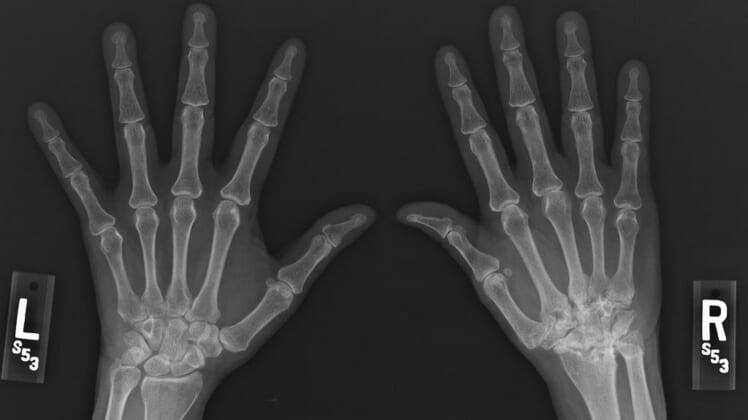5 Arthritis Types and How to Tell Them Apart

Throughout your life, you’ve probably heard an aging person joke about their stiffening joints. “I’m just getting old,” they say:
To an extent, there is truth to that remark. Even so, as you age, realize that joint pain is still not a normal part of life.
You should not dismiss it since painful joints may mean the onset of arthritis. In addition, by catching the problem early, you could save yourself a lot of unnecessary pain.
What Causes High Blood Pressure?
How Many People Suffer From Arthritis?
In the United States, over 50 million people suffer from arthritis, according to the CDC. A huge number of these—60 percent—are between the working ages of 18 and 64.
Many sufferers find difficulty in performing essential job tasks, and in some cases, their condition keeps them from working at all. Aside from the economic effects, arthritis can also prevent people from getting adequate exercise and can significantly reduce their quality of life.
Which Type of Arthritis?
To deal with arthritis properly, you should first work with your doctor to find out which type you or your loved one has. While there are over 100 different types possible, most Americans suffer from only a few.
1. Rheumatoid Arthritis
According to the Arthritis Foundation, over 1 million Americans suffer from rheumatoid arthritis (RA). This condition is actually an autoimmune response, meaning that the immune system is attacking the joints or parts of the body that affect the joints. As the immune system attacks, the joints get damaged and inflamed, causing an array of problems for the sufferer.
Symptoms include pain and stiffness in major joints like the hands or legs, swelling that lasts for hours, fatigue, appetite and weight loss or joints that feel warm to the touch. The pain is usually severe and can last all day for some people.
If you’re experiencing this type of joint pain, you should see a doctor immediately. Because of the immune response, RA can affect other vital organs in the body.
Related: Recognizing and Treating Hyperparathyroidism
2. Osteoarthritis
Osteoarthritis (OA) is a highly common type of arthritis, so common that most people are referring to OA when they talk about arthritis in general. According to the CDC, nearly 30 million adults are suffering from this condition in the US.
How does OA happen? It occurs when a joint in the body begins breaking down because of wear and tear, often due to aging, injuries, or obesity. Usually, people get OA in their knees, hips, and hands, and the condition happens over time as the cartilage wears down.
Symptoms include stiffness in the morning or after long rests, aching pain, pain when walking, bending or gripping objects, swelling and a joint that is warm to the touch. Because symptoms worsen slowly, you may notice the pain come and go.
3. Gout
Another common type of arthritis is gout. This type usually affects men and those who are obese and is caused by an increase in uric acid in the body.
Unlike other arthritis types, gout will flare up for a period and then go into remission for months before another flare-up again. If a person gets regular flare-ups, they may eventually find gout worsening into gouty arthritis.
Symptoms include intense pain, redness, swelling, and heat around the joint. Also, it usually affects one joint at a time and occurs in weight-bearing areas like the big toe, ankle, or knee.
4. Juvenile Arthritis
Juvenile arthritis (JA) is actually an umbrella term that refers to arthritis in children under 16. JA is usually caused by an autoimmune response, although experts cannot find a clear cause. Different types of JA can affect a child’s entire body or specific areas like the tendons.
Typical symptoms that parents should watch for are stiffness, swelling and tenderness, rash, limping, eye redness and vision problems, irritability, and a persistent fever.
Traveling Soon? Look Out for Bed Bugs.
5. Psoriatic Arthritis
Finally, many patients are suffering from psoriatic arthritis. According to the National Psoriasis Foundation, 30 percent of all those affected by the skin condition will also suffer from psoriatic arthritis. Those affected usually get psoriasis first, a skin condition that causes scaly, raised, red, and white patches of inflamed skin around the body.
This condition can then lead to inflammation in the joints, causing arthritis. Symptoms include swollen joints, especially the fingers and toes, discolored fingernails, swelling, and sometimes back pain.
Conclusion
In any of these cases, those suffering from arthritis should follow a few lifestyle steps outlined by the CDC. These steps will help manage arthritis and keep up healthy motivation.
- Find support programs.
- Maintain moderate exercise at least 5 days per week.
- Manage a healthy weight.
- Check in with your doctor about symptoms and treatment.
Arthritis affects millions of Americans, hampering movement and quality of life as the condition worsens.
By understanding your type of arthritis fully and getting support, you can succeed in managing this often crippling condition. If you are experiencing regular joint pain, talk to your doctor right away.

What Type of Meat is Healthiest?
